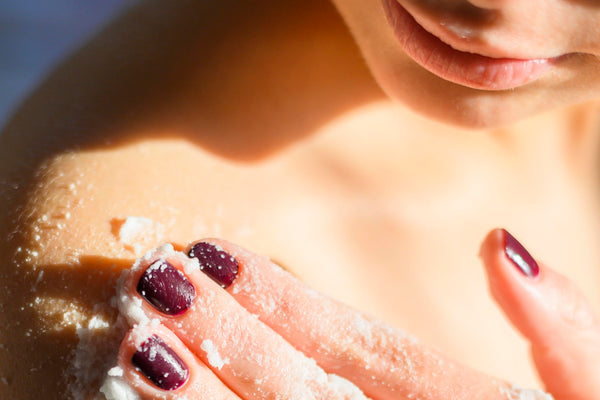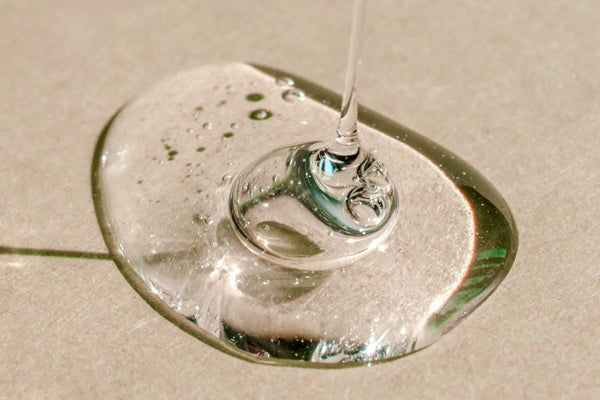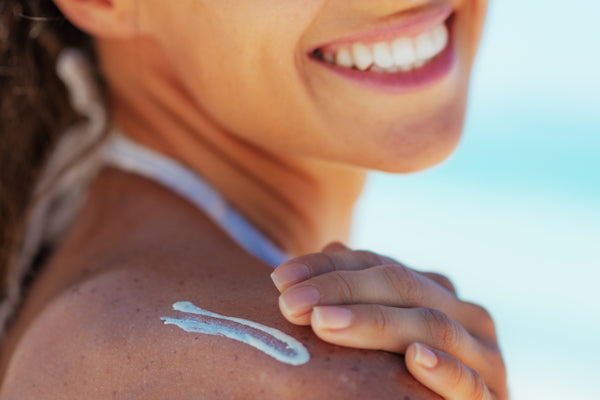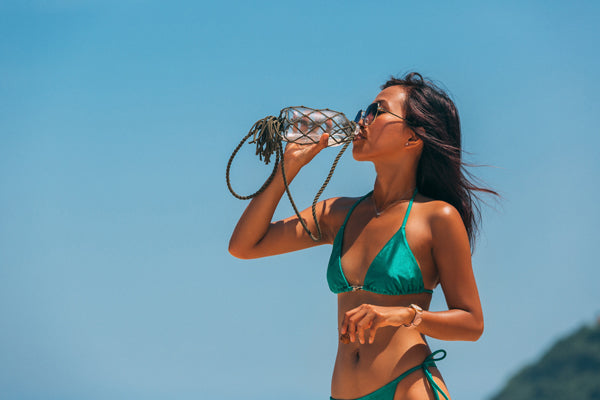Do you dream of a perfect, uniform and long-lasting tan? Then you're in the right place! In this article, we'll walk you through a detailed pre-tan routine to achieve stunning color. But before we dive into the routine, it's important to understand the importance of good skin preparation before sun exposure.
Tanning is a natural reaction of our body to exposure to UV rays, which stimulates the production of melanin, the pigment that protects the skin and gives it a darker colour. However, if you don't prepare your skin properly before going out in the sun, you run the risk of damage caused by UV rays, such as sunburn, premature aging and even skin cancer. That's why it's vital to follow a pre-tan routine to ensure healthy skin and a long-lasting tan.
We begin by analyzing the key steps of a pre-tan routine, from essential body skincare products, to beauty techniques and safe tanning methods.
Importance of a pre-tan routine
A well-planned pre-tan routine is essential to prepare your skin for sun exposure and ensure an even and long-lasting tan. Following a proper routine helps remove dead cells from the surface of the skin, hydrating and nourishing it in depth. Furthermore, a good preparation of the skin reduces the risk of burns and prevents premature aging, guaranteeing a healthy and luminous tan.
But what are the key elements of a pre-tan routine? We begin by exploring essential body care products and techniques, followed by a full body beauty routine that includes exfoliation and hydration.
Finally, we will delve into the tanning process, analyzing natural and artificial methods, and providing advice on how to prepare the skin for a safe and uniform tan.
Body care: essential products and techniques

To prepare the skin for a tan, it is important to use specific products for body skincare. Here are some of the essential products and techniques to include in your pre-tan routine:
- Body cleanser : Choose a gentle body cleanser that removes dirt and oil without drying out the skin. Opt for formulas based on natural ingredients and free from aggressive substances such as SLS and SLES.
- Body exfoliator : A good exfoliator scrub helps remove dead cells from the surface of the skin, making it smoother and more even. Choose a product with appropriately sized granules that won't scratch the skin and use it at least once a week for best results.
- Body moisturizer : after cleansing and exfoliating the skin, it is essential to moisturize it with a rich and nourishing cream . Choose a product with emollient and hydrating ingredients, such as coconut oil, shea butter and hyaluronic acid.
- Dry Oil : To amp up hydration and give skin a glowing look, apply a dry oil after your moisturizer. These products absorb quickly and leave the skin soft and velvety, ready for tanning.
Body beauty routine: exfoliation and hydration
Exfoliation and hydration are two fundamental steps in your pre-tan body beauty routine. Here's how to do them correctly to get smooth, tan-ready skin:
Exfoliation : start by applying DOLCE ALMOND illuminating body scrub on damp skin, with circular and delicate movements. Focus on rougher areas, such as elbows, knees and heels, to remove dead skin cells and smooth out skin. Rinse thoroughly with warm water and pat the skin dry with a soft towel.
Hydration : after exfoliation, apply a generous amount of DOLCE ALMOND restructuring body cream all over the body, massaging gently until completely absorbed. Additionally, you can use TUTTO GLOW Illuminating Serum to amp up hydration and give skin a radiant glow. Remember to moisturize your skin daily, to keep it soft and protected from the dehydrating action of UV rays.
Stop photosensitizing treatments and products

For a more uniform tan, do not perform treatments such as waxing or pulsed light before sun exposure and stop using photosensitizing treatments such as:
- Essential oils : mainly avoid those derived from citrus fruits, such as orange, grapefruit, lime or bergamot.
- AHA/BHA Acids : Stop using alpha- and beta-hydroxy acids such as glycolic acid or salicylic acid. Although they are able to remove dead cells and stimulate cell turnover, remember that they tend to sensitize the skin if you expose yourself to the sun, risking the formation of dark spots and burns.
- Snail slime : given the delicate exfoliating action it carries out, due to the natural and low concentration of glycolic acid, it is better to include it in the photosensitizing substances.
- Retinol : When combined with ultraviolet rays, retinol can cause skin photosensitivity, irritation and burns.
- Perfumes: these are also photosensitizers. Do not spray it directly on the skin but prefer the clothes, in this way you will avoid unpleasant burns.
Early sun friendly diet
To better prepare yourself for the first rays of the sun, integrate foods rich in beta-carotene and vitamin E into your diet, active ingredients that help the skin to regenerate and stimulate its production of melanin. Any examples? Carrots, spinach, asparagus and tomatoes are perfect for promoting a tan as well as apricots, berries and oranges.
Supplements based on antioxidants?
If you are tan-addicted, you can prepare your skin by taking specific antioxidant-based supplements. To be taken about a month before sun exposure, these supplements can be very useful for people with sensitive skin and prone to sunburn. If you intend to opt for this solution, consult your doctor first so that he can recommend the most suitable product for you.
First sun? Gradual Exposure!

Gradually exposing yourself to the sun is the best solution to avoid burns, guaranteeing you a perfect tan without too much stress on your skin. In the first few days always use a high sun protection factor to be applied a quarter of an hour before exposing yourself to the sun. Don't forget that even when the sky is cloudy you still risk burning, so don't forget your sunscreen!
Natural vs artificial tanning
Before diving into a tan, it's important to understand the differences between natural and artificial tans. A natural tan is obtained through exposure to the sun's UV rays, while an artificial tan is obtained through the use of sunlamps or self-tanning products. Both methods have advantages and disadvantages, and the choice depends on personal preferences and the needs of your skin.
Natural tanning offers increased vitamin D production and a more natural, even color. However, unprotected sun exposure can lead to sunburn, premature aging and even skin cancer. Furthermore, natural tanning takes time and patience, and can be affected by factors such as climate, weather and skin pigmentation.
Artificial tanning, on the other hand, offers a quick and even tan, without the risks associated with sun exposure. However, it can be expensive and require time and attention to get a natural result. Also, some self-tanning products can cause spots and streaks on the skin if not applied correctly. Also remember that tanning lamps accelerate skin aging, so a rigorous pre-tanning body routine is undoubtedly essential to counteract its effects.
Prepare the skin for a safe and uniform tan

Regardless of the tanning method you choose, it is essential to prepare your skin properly to ensure a safe and even tan. Here are some tips to prepare your skin before sun exposure:
- Avoid sun exposure during the hottest hours : avoid sun exposure between 11am and 4pm, when UV rays are most intense and harmful to the skin.
- Wear protective clothing : Wear hats, sunglasses, and protective clothing to reduce your exposure to UV rays.
- Apply sunscreen : Choose a sunscreen that is suitable for your skin and apply it at least 30 minutes before sun exposure. Remember to reapply sunscreen every two hours, or after every bath or strenuous physical activity.
- Moisturize Your Skin : Keep your skin hydrated by drinking plenty of water and applying body moisturizers.
Choose the right sunscreen
Choosing the right sunscreen is essential to protect the skin from damage caused by UV rays and ensure a safe and uniform tan. Here are some factors to consider when choosing sunscreen:
- SPF : Choose a sunscreen with a sun protection factor (SPF) that is appropriate for your skin. For most people, an SPF of 30 is sufficient to protect skin from UV rays.
- Formula : Choose a light, non-oily formula that absorbs easily and doesn't clog pores. Opt for products based on natural ingredients, such as aloe vera and coconut oil, for extra hydration and nourishment of the skin.
- Water resistance : If you plan on swimming or sweating a lot, choose a water-resistant sunscreen to ensure long-lasting protection.
- Expiration date : Always check the expiration date of sunscreen before using it, to ensure the effectiveness of the product.
Hydration and nutrition for a lasting tan

Hydration and nutrition are key to maintaining healthy, radiant skin while tanning. Here are some tips to keep your skin hydrated and nourished:
Drink plenty of water
Keep your skin hydrated by drinking at least eight glasses of water a day. Water helps eliminate toxins and keep the skin soft and hydrated.
Eat foods rich in antioxidants
Foods rich in antioxidants, such as fruits and vegetables, help protect the skin from damage caused by free radicals and maintain an even and lasting tan.
Use natural oils
Apply natural oils, such as coconut oil or argan oil, to your skin for added hydration and nutrition. These products help reduce dehydration caused by UV rays and keep skin soft and glowing.
Skin care after tanning: keep your glow
Once you've achieved your desired tan, it's important to keep your skin hydrated and protected to preserve your glow. Here are some tips for skin care after tanning:
- Moisturize your skin : Apply body moisturizers daily to keep your skin soft and hydrated.
- Avoid exposure to the sun during the hottest hours : avoid exposing yourself to the sun during the hottest hours to prevent sunburn and skin dehydration.
- Use aloe vera products : Apply aloe vera products to your skin to soothe and moisturize your skin after tanning.
What are your secrets for preparing your skin for the first sun? Trust us in the comments!

Leave a comment